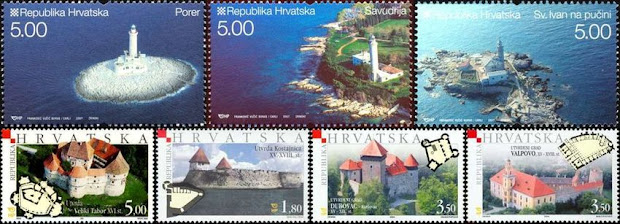In World War Two Croatia was torn apart by warring factions, of which partisans, fascists (ustaše) and četniks were the most prominent. After the war, the četniks disappeared from the scene, only to reappear in the 1990s in Vukovar, Knin and other places that Serbian rebells considered theirs. The partisans and ustaše, however, never left the stage of Croatia's post war history. In a way the Second World War never ended here. Of course, in Tito's Yugoslavia ustaše were obviously the bad guys. Not without a reason: even the German Nazi's and Italian fascists who de facto ruled Croatia during WWII abhorred the cruelty of the ustaše terror against Serbs, Jews and anti-fascist Croats.
With Croatia's independence, the partisan movement was knocked off its pedestal. So far so good, one could say. However, the downfall of socialism went hand in hand with the rehabilitation of the fascist ustaše movement. Ustaše symbols can be seen on the streets and the Croatian equivalent of "Sieg heil" (Za dom spremni - Ready for the homeland) reverberates through the stadium when Croatia's national football team plays.
 In the latest episode of the ongoing war between partisans and ustaše the main role is played by an new organisation with the lengthy name Croatian Ceremonial Association of World War Two and Croatian War of Independence Warriors of the Zadar District, conveniently abbreviated to HODB. So far the HODB seems to do little more than arguing over the question whether portraits of Ante Pavelić (the Croatian Hitler) should be classified as fascist or not. A strange question, considering the fact that on 28 December the HOBD will hold a Mass in Zadar to commemorate the day of Pavelić's death. Partisans, by the way, are excluded from HODB-membership.
In the latest episode of the ongoing war between partisans and ustaše the main role is played by an new organisation with the lengthy name Croatian Ceremonial Association of World War Two and Croatian War of Independence Warriors of the Zadar District, conveniently abbreviated to HODB. So far the HODB seems to do little more than arguing over the question whether portraits of Ante Pavelić (the Croatian Hitler) should be classified as fascist or not. A strange question, considering the fact that on 28 December the HOBD will hold a Mass in Zadar to commemorate the day of Pavelić's death. Partisans, by the way, are excluded from HODB-membership.
With Croatia's independence, the partisan movement was knocked off its pedestal. So far so good, one could say. However, the downfall of socialism went hand in hand with the rehabilitation of the fascist ustaše movement. Ustaše symbols can be seen on the streets and the Croatian equivalent of "Sieg heil" (Za dom spremni - Ready for the homeland) reverberates through the stadium when Croatia's national football team plays.
 In the latest episode of the ongoing war between partisans and ustaše the main role is played by an new organisation with the lengthy name Croatian Ceremonial Association of World War Two and Croatian War of Independence Warriors of the Zadar District, conveniently abbreviated to HODB. So far the HODB seems to do little more than arguing over the question whether portraits of Ante Pavelić (the Croatian Hitler) should be classified as fascist or not. A strange question, considering the fact that on 28 December the HOBD will hold a Mass in Zadar to commemorate the day of Pavelić's death. Partisans, by the way, are excluded from HODB-membership.
In the latest episode of the ongoing war between partisans and ustaše the main role is played by an new organisation with the lengthy name Croatian Ceremonial Association of World War Two and Croatian War of Independence Warriors of the Zadar District, conveniently abbreviated to HODB. So far the HODB seems to do little more than arguing over the question whether portraits of Ante Pavelić (the Croatian Hitler) should be classified as fascist or not. A strange question, considering the fact that on 28 December the HOBD will hold a Mass in Zadar to commemorate the day of Pavelić's death. Partisans, by the way, are excluded from HODB-membership.




0 reacties:
Post a Comment